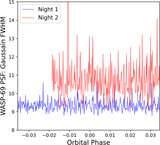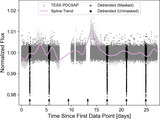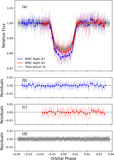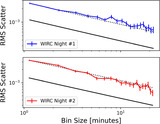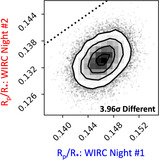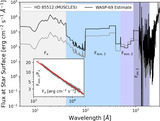Image Details
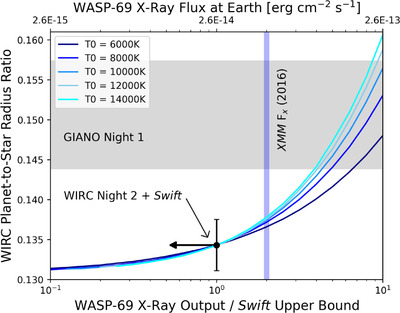
Caption: Figure 8.
WIRC planet-to-star radius ratio vs. WASP-69's X-ray output, normalized by the Swift 95% upper confidence bound. The top x-axis shows the X-ray fluxes from WASP-69 in terms of what would be measured at Earth. The black point represents the constraint from contemporaneous multiwavelength data, where the WIRC night 2 transit depth is taken from Section 3.3. The gray horizontal shaded bar and the blue vertical shaded bar show the WIRC-like metastable HeI transit depth from GIANO night 1 in 2019 (best-fit value from Section 3.3) and the XMM-Newton X-ray flux from 2016, respectively. Lines represent theoretical p-winds model results for various T 0 values, where the mass-loss rates are calculated with the same efficiency ϵ that is required to match the contemporaneous data from 2023. WASP-69's X-ray flux from 2016, although not contemporaneous with any metastable HeI transmission, changes in a direction and magnitude consistent with the interpretation that the drop in planetary absorption data over time stems from long-term changes in the stellar XUV across the magnetic activity cycle.
Copyright and Terms & Conditions
© 2024. The Author(s). Published by the American Astronomical Society.


